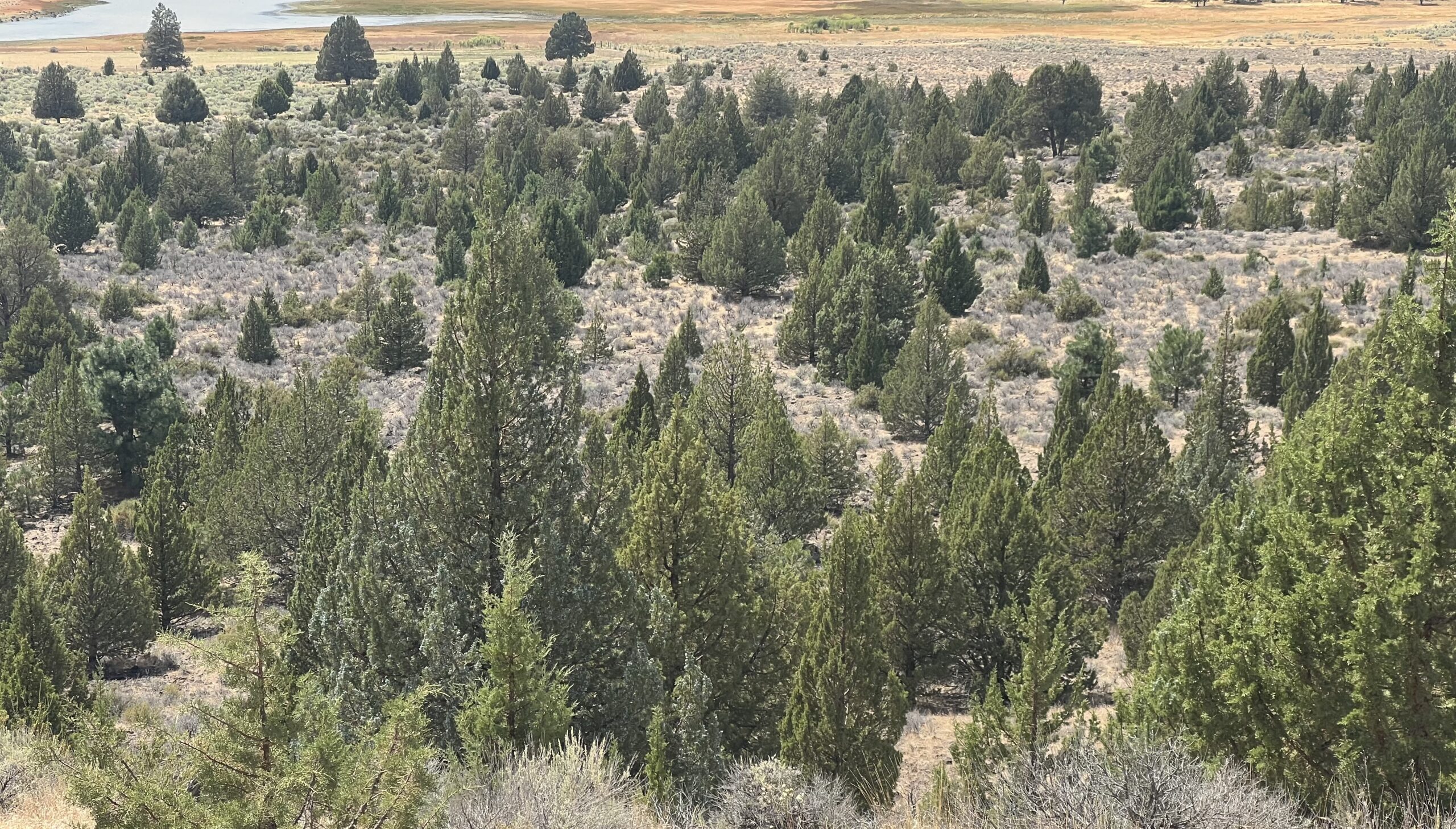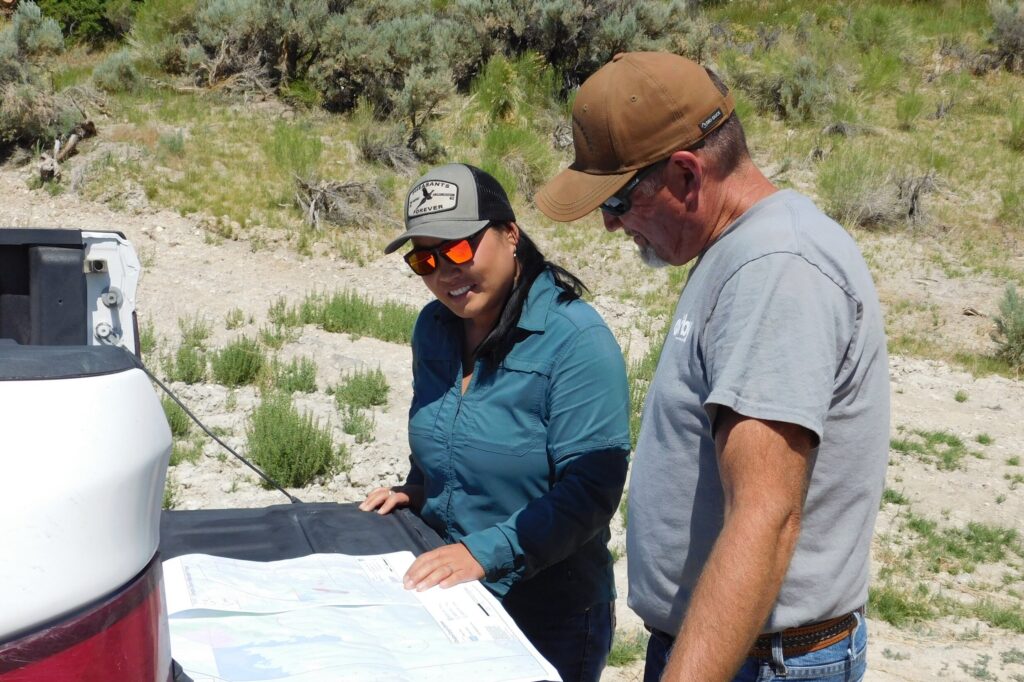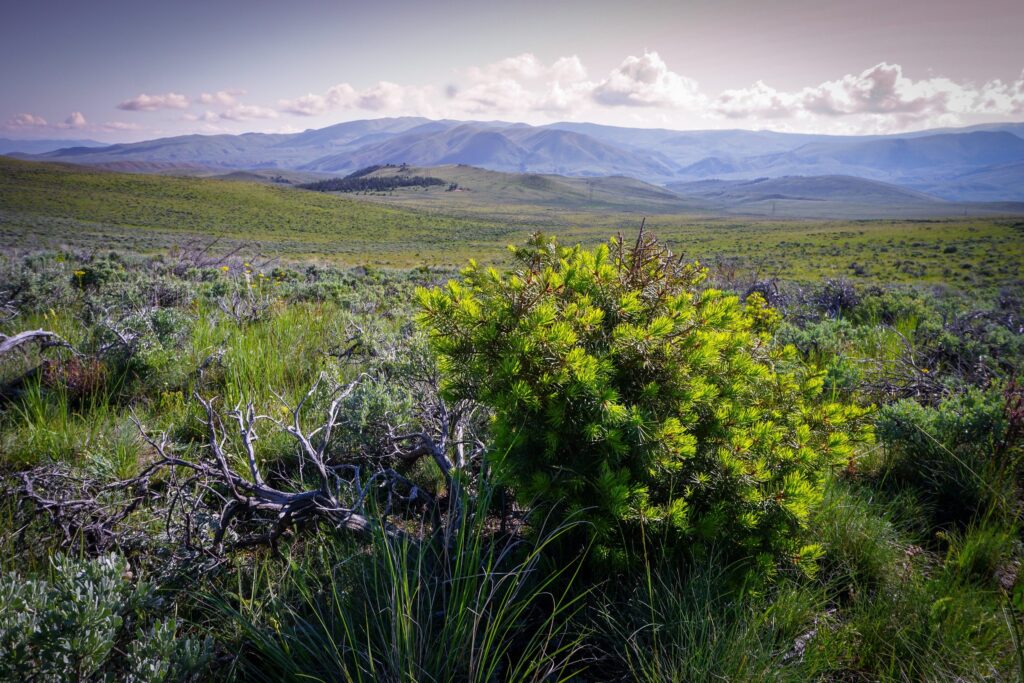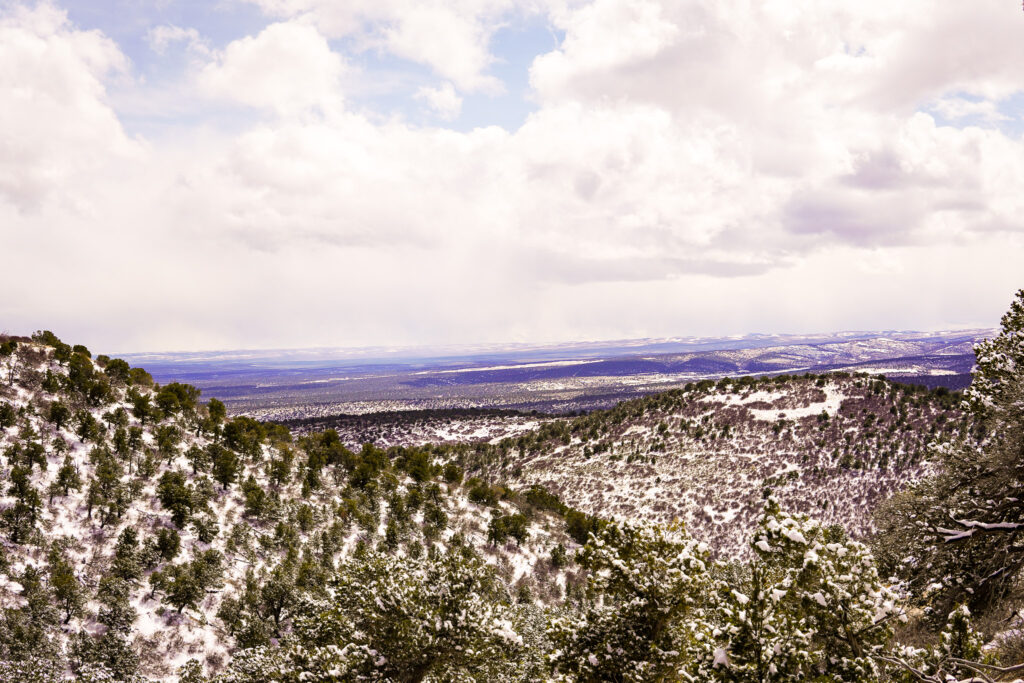
Field Notes
By Sarah Leal, Susanville Rangeland Conservationist
Sarah Leal is a Rangeland Conservationist in Susanville, California and a member of the IWJV’s Wetlands Capacity Team. She assists the Natural Resources Conservation Service in establishing conservation plans on farms, ranches, and other private lands to enhance soil, water, plants, wildlife habitat and other natural resources in the Modoc Plateau region. Here, she describes one of the most pressing topics for watershed health in the area—juniper encroachment into sagebrush rangelands.
Western juniper is prominent across the wild landscapes of Northeast California. Factors such as fire suppression have increased their density and expansion into areas where they historically haven’t reached. As a result, they are now scattered from the mountains to the vast rangelands across the region. Every drive up Highway 139 or 395 will leave you questioning if there are more saplings growing than you remembered, and ranchers in the area will tell a similar tale. They’ll recall a time when there used to be only a handful on a hilltop, or when some of their grazing fields were once juniper-free. They’ll also recount how there was better forage, a greater amount of forbs, and more water in riparian areas. But no story about the impacts of western juniper encroachment is as clear as the sagebrush communities withering underneath them.
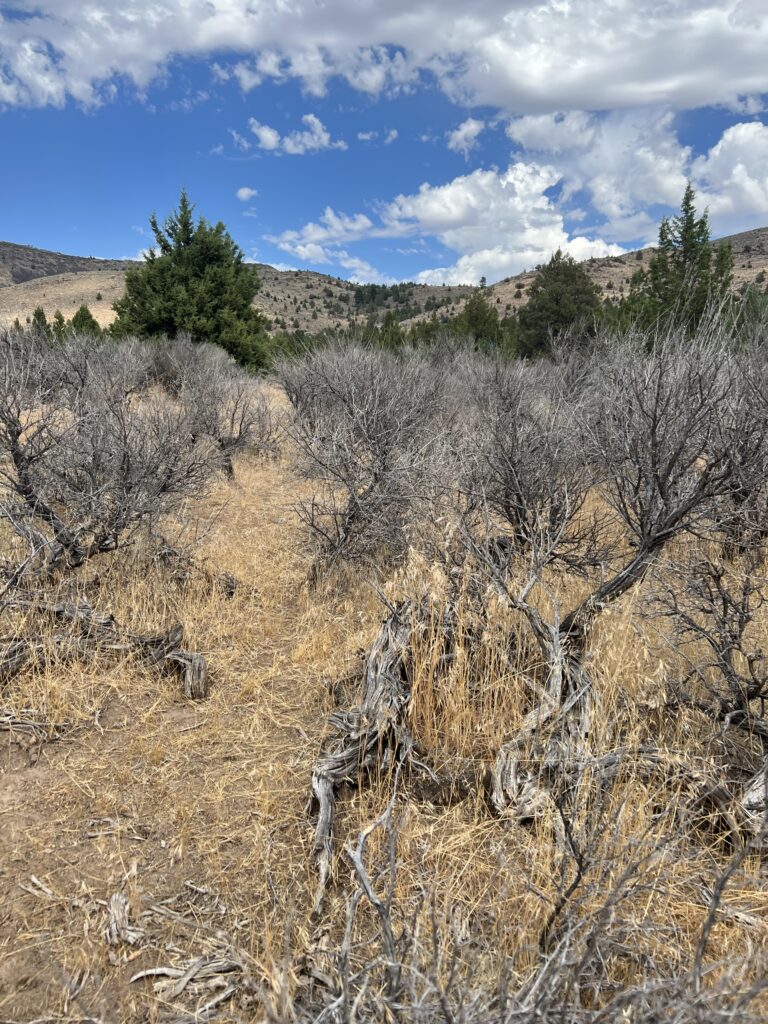
The site in this photo is an example of one of the many ranch properties that I have seen affected by western juniper encroachment. It didn’t take much to identify what was wrong: juniper is encroaching from the rocky outcrops, there are high amounts of sagebrush mortality, and invasive annuals such as cheatgrass are outcompeting perennials.
I took this picture because it encapsulates the late-stage effects of juniper encroachment. Discussing the change in the hydrology of the community, extensive topsoil loss, and decrease in crucial wildlife habitat don’t exhibit the impact as well as an image of the degradation.
As I continued to hike through the property, I reached a viewpoint that provided a greater picture of the changes taking place. Areas that would have historically been healthy sagebrush communities and grazing lands are now dense with new juniper growth. The amount of grey sagebrush skeletons are stark against the green. But from this outlook, it is seen that an early-phase area of intact sagebrush still remains towards the end of the juniper sprawl. Protecting this early-phase section of juniper encroachment is crucial to maintaining and promoting successful perennial plant growth. The late-phase encroachment seen in this photo can take a considerable amount of time and labor to return to a healthier state.
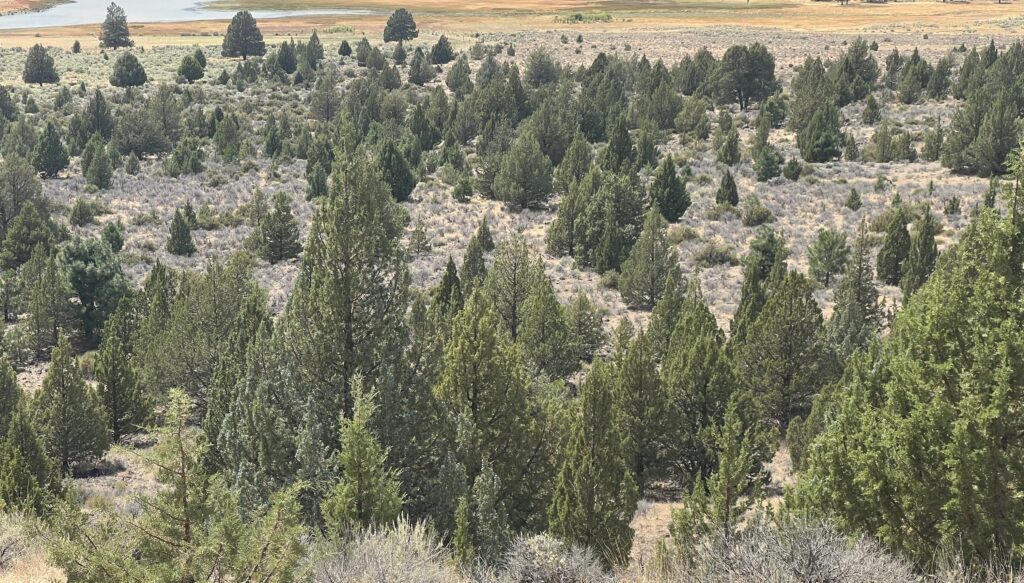
Both photos tell the story of how western juniper has altered landscapes across Northeast California. Government agencies, partner organizations, and private landowners in this area are working to combat juniper encroachment because the outcomes are clear. More wildlife habitat, increased forage availability, and improved ecosystem functions are all results that are collectively backed. And while images I took are examples of late-stage results, they showcase the importance of protecting these landscapes before treatment is overdue.
